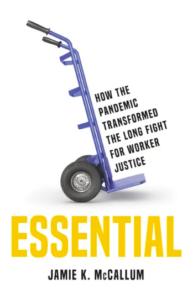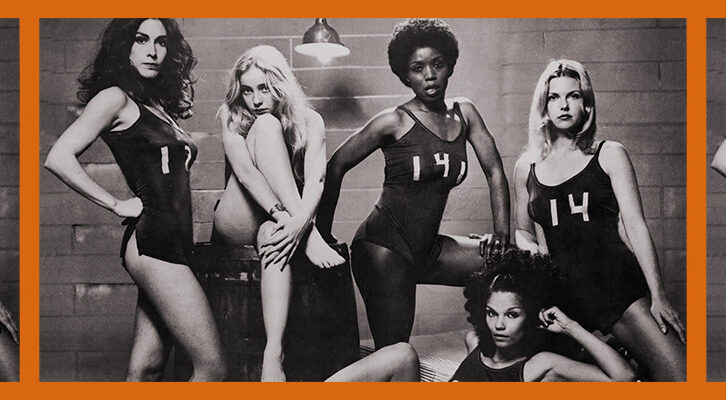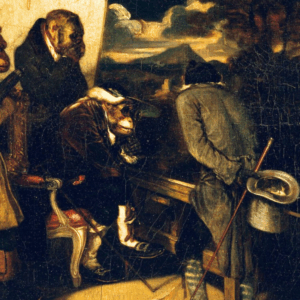
The Dramatic Consequences of Excluding Homecare Workers from Labor Rights
Jamie K. McCallum Considers the Legacy of Terrible Working Conditions in the Home Healthcare Industry
My first job out of college was working as a home care aide just outside Seattle in 1999. Robert had suffered a stroke as a complication of a routine surgery. It left him immobile from the waist down, with slurred speech and the appearance of having suffered a stroke. I cooked and cleaned, took him to the bathroom, dressed and undressed him, and administered some basic medications. I went shopping for him and did simple upkeep around the home and yard.
Sometimes I stayed late and we watched buddy comedies together before he fell asleep. It was rewarding for both of us. Robert got the benefit of living an independent life outside of an institution. I was able to connect with a person I deeply admired, both for who he had been—a Chinese medical doctor and herbalist—and for who he had become, a gentle and kind man who relied on a small crew of round-the-clock helpers for his daily dignity and survival.
The pay was ten dollars per hour. It wasn’t Robert’s fault. He was given a set amount from Medicaid to pay wages for his caregivers. He always apologized profusely about the paltry sum he provided, but we both assumed there was nothing we could do. After a year, I left to work at a bakery, which paid less but involved no commute, so I could save on gas.
Robert and I had it wrong. During the exact time I worked for him, unbeknownst to us, home care workers in California were organizing a union. There were no unions in the industry at that time. The work itself was often done informally, for disabled or elderly friends and relatives. When it was more of a traditional job, home care aides—a largely female immigrant workforce—were dispatched to clients via hiring services. The work was long and arduous, with low pay and few regulations. Both workers and clients reported widespread abuse.
Starting in 1986, for twelve years an extraordinary coalition of workers, clients, union organizers, and community advocates fought for a better system. They wanted to find a way to raise patient care standards and job quality in the home care industry. In the late eighties, home care workers made the state minimum wage of $3.75, a sum low enough to put full-time workers below the federal poverty line. They were disqualified from medical insurance, sick leave, pension, or holiday pay. Their jobs were among the most grueling and worst paid in the country.
Winning was always going to be hard. According to Linda Delp and Katie Quan, who wrote about the campaign, workers were dispersed over a huge sprawling area of Los Angeles County and spoke over one hundred languages, and the industry averaged about 40 percent turnover, making regular contacts with potential leaders and veteran activists difficult. There was no single employer of record; it was a fissured work environment before the term was even coined. Many home care recipients as well as the general public opposed the workers’ union, assuming it would drive up costs in an industry already underresourced. The challenges, however, posed a huge opportunity. Organizing home care workers held the potential to define an entirely new workforce, a class in itself, and to transform it into a class for itself, with the ability to upgrade a vital part of the care economy.
Home care aids were disqualified from medical insurance, sick leave, pension, or holiday pay. Their jobs were among the most grueling and worst paid in the country.
The healthcare workers’ union, SEIU, was at that time engaged in new kinds of social movement unionism through its campaigns to win “justice for janitors” in a few major cities across the country. New leadership, some of whom were recruited from left-leaning social justice groups, brought new vitality to the union that was useful during the home care campaign.
Throughout the eighties and nineties, the union mobilized tens of thousands of disparate workers into a grassroots movement—they wanted better wages, better care for patients, and more stable jobs, like other professional healthcare workers. The organizing was less focused on workplace concerns and more on legislative goals. Home care workers joined with others across California to pressure the government to twice lift the minimum wage, first to $4.25 in 1996 and then to $5.75 in 1998.
Then the union sued the state to force it to bargain with workers. In a sense, this was an example of unfissuring the workplace. The result of that lawsuit and organizing effort was the creation of In-Home Supportive Service (IHSS), a public entity that became the caregivers’ employer of record as well as the authority that offered job training, skills development, and safety standards. The union also won $800 million more in funds for Medicaid to fund home care work, winning allegiance from workers, public health advocates, and allies in government.
In 1999, the union finally agreed to a contract with the state. It was a stunning victory. About seventy-four thousand workers joined SEIU Local 434B that year, some of whom had for years been working informally, caring for friends and family for free. Now they were eligible for pay and benefits. At that time, it was the largest organizing victory for the US labor movement since the United Auto Workers unionized Ford’s River Rouge plant in 1941, an early sign that healthcare labor would replace industrial labor as the new vanguard of working-class struggle. It was also an especially creative display of collective action in the “care economy.”
Winning a public employer and bargaining rights for people who were previously unrecognized as workers practically invented an entirely new labor relations environment for caregivers. Their turnover declined, wages rose, benefits appeared, and the job became semiprofessional. By 2000, San Francisco home care workers earned $9.75, the highest in the state, and enjoyed comparably generous benefits. Over the past thirty years, SEIU has replicated the strategy in copycat movements, creating a public employer for caregivers in thirteen states where none had existed previously.
The more I learned about this campaign in the industry, the more I felt compelled to be part of it. I eventually moved to California and became a union organizer with SEIU, an experience that changed my life and, hopefully, the lives of a few California caregivers.
*
But unions, for all their power, and labor law, for all its supposed agenda-setting, have still not been able to ameliorate some of the worst conditions that homecare workers face—conditions that worsened during the pandemic.
For the last seventeen years, Edith Guttierez has regularly worked twenty-four-hour shifts as a home care worker in New York City—but she’s only paid for half of that time. And she’s not alone. About 8 percent of New York State’s 240,000 home care workers are assigned twenty-four-hour shifts, many of them consecutive back-to-back shifts. The workers, almost all women of color and immigrants, just as they were thirty years earlier in California, are responsible for the health and safety of those needing round-the-clock care. The frequency of twenty-four- and even forty-eight-hour shifts increased during the pandemic because patients requested that caregivers reduce their travel to and from work as much as possible. As Edith commuted over an hour by bus and subway to and from work, she was at greater risk of contracting the virus and spreading it to her patients.
New York Department of Labor guidance dating back to the 1990s ensures that these 24-hour shifts are legal. It’s just a modern example of the ways that homecare aides have been long shut out from social protections that other workers enjoy. The New Deal, once the vital center of American liberalism, offered working people guarantees of a minimum wage, unemployment compensation, and Social Security, as well as the right to organize unions and bargain collectively.
But it included carve-outs to exclude domestic and agricultural workers, who were predominantly Black and female. The 1938 Fair Labor Standards Act (FLSA), which set the first maximum-hour limits and established the minimum wage, and the 1935 National Labor Relations Act, which guaranteed collective bargaining rights, did not extend to most low-wage care workers either.
A few decades later, the passage of the 1964 Civil Rights Act had little relevance for most domestic workers because its antidiscrimination and anti–sexual harassment clauses didn’t apply to workplaces that employed fewer than fifteen people. The 1970 Occupational Health and Safety Act was similarly irrelevant since it didn’t apply to homeowners who employ workers for “domestic household tasks” in their homes. And when the FLSA was revised in the 1970s, the Department of Labor continued to exclude home-based caregivers from basic labor rights. The Families First Coronavirus Response Act and the Emergency Family and Medical Leave Expansion Act, which mandated that businesses grant eighty hours of paid sick leave to workers through the end of 2020, also excluded home care aides.
This legacy of legal exclusion has had dramatic consequences. The industry’s median hourly wage is just over $12 an hour, or $16,200 per year. Domestic workers are three times as likely as other workers to live in poverty, and almost none of them have paid sick leave or belong to a union. The historical bellwether of progressive ideals actually reinforced the racialized and gendered hierarchy of the labor market.
Edith and other home care attendants turned to social movement organizations instead, and organized with the Ain’t I a Woman?! campaign to demand the end of twenty-four-hour work shifts. Ain’t I a Woman?! was founded by women garment workers in US sweatshops to fight against eighty-hour workweeks and low pay.
Caregiving is indispensable to society, yet we routinely deny caregivers the ability to do the job with dignity, good pay, and quality working conditions, thus driving down the level of care they’re able to administer.
Their efforts have led to the introduction of state and city legislation mandating that workers are prohibited from working two nonsequential twelve-hour shifts. The state bill never made it to the floor for a vote. And the city bill has, surprisingly, yet to find enough sponsors even among New York City’s allegedly progressive City Council. Their union has supported neither.
In March 2022, 1199SEIU announced an “historic” $30 million wage fund to pay back 120,000 home care workers who had more than $6 billion of wages stolen while working twenty-four-hour workdays. After seven years of delay, this settlement will award workers 0.5 percent of the back pay they’re actually owed. The legality of the twenty-four-hour workday, and wage theft, remained in place.
At a rally to challenge the meager outcomes, fuming workers spoke out. “With this settlement, the union is trampling upon my right and dignity,” said Mei Kum Chu, a retired home attendant and former member of 1199SEIU. “Is this the union’s response to my suffering from 24-hour workdays all these years?” “With this agreement, 1199 is stomping on us like cockroaches,” said Epifania Hichez, also a former caregiver who said she suffered from hand pain and sleeplessness. One caregiver, Lai Yee Chan, approached me with her hands up to display disfigured fingers and a crooked wrist, the result of decades of grueling twenty-four-hour shifts.
The work caregivers like Edith, Mei Kum, Epifania, and Lai Yee perform is invaluable, and so we simply do not value it at all. And herein lies one of our most important social fault lines exposed by the pandemic. Caregiving is indispensable to society, yet we routinely deny caregivers the ability to do the job with dignity, good pay, and quality working conditions, thus driving down the level of care they’re able to administer. Shortchanging workers in home care, nursing, day care, and childcare might seem like a bargain, but it’s really a gamble.
_____________________________________

Excerpted from Essential: How the Pandemic Transformed the Long Fight for Worker Justice by Jamie K. McCallum. Copyright © 2022. Available from Basic Books, an imprint of Hachette Book Group, Inc.
Jamie K. McCallum
Jamie K. McCallum is professor of sociology at Middlebury College. He is the author of Worked Over and Global Unions, Local Power, which won the American Sociological Association’s prize for the best book on labor. His writing has appeared in the Washington Post, Mother Jones, Dissent, and Jacobin. His latest book is Essential. He lives in Weybridge, Vermont.



















